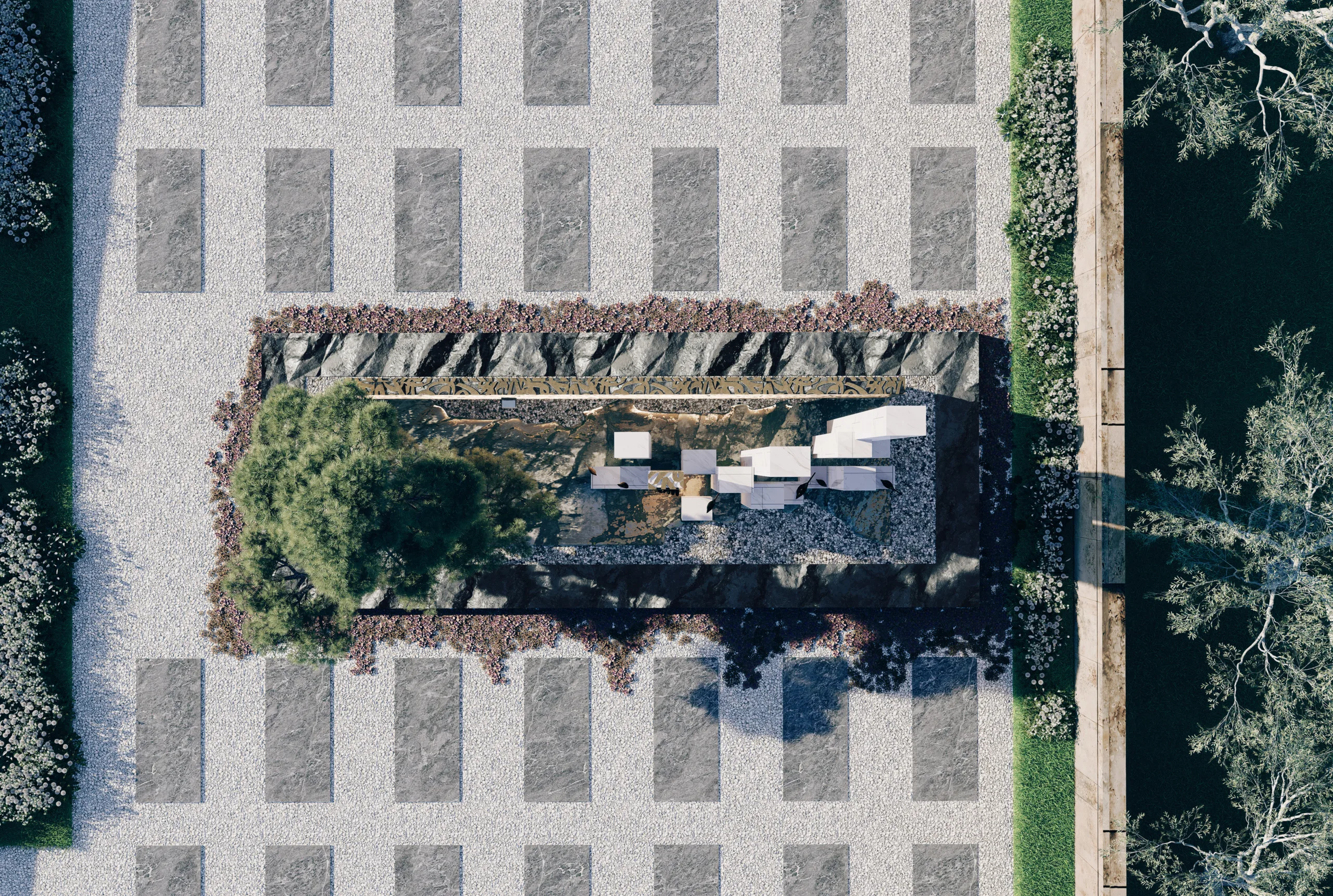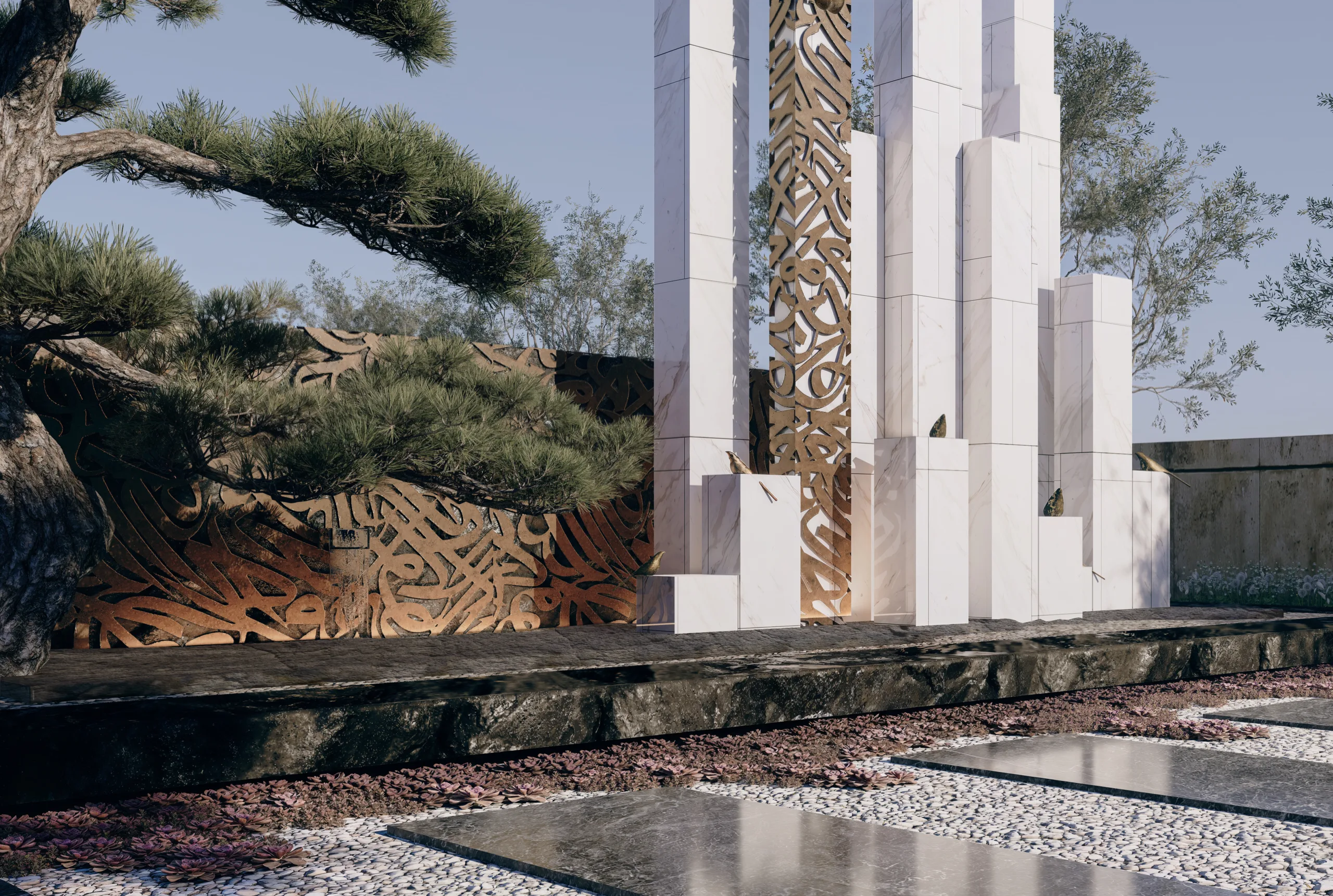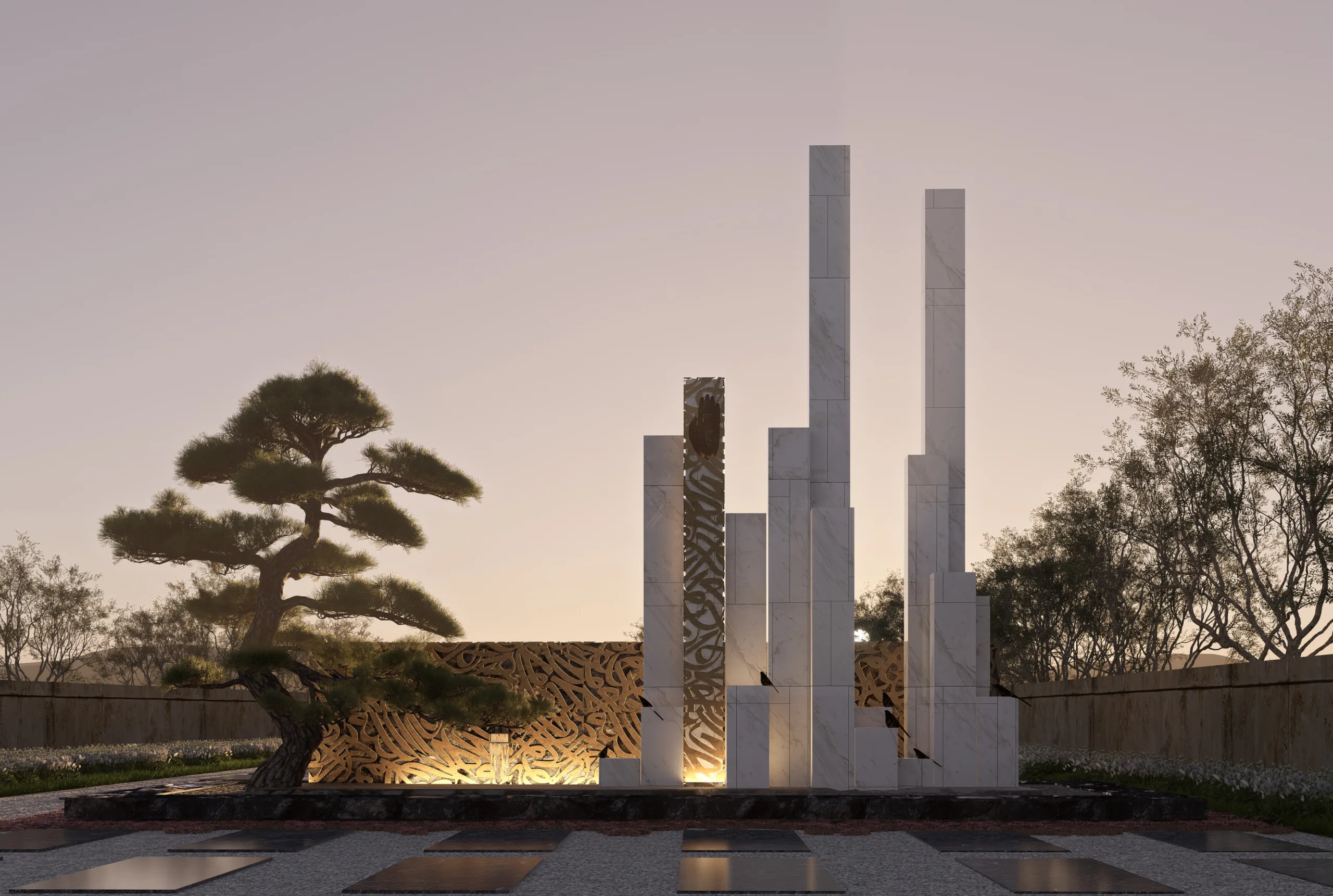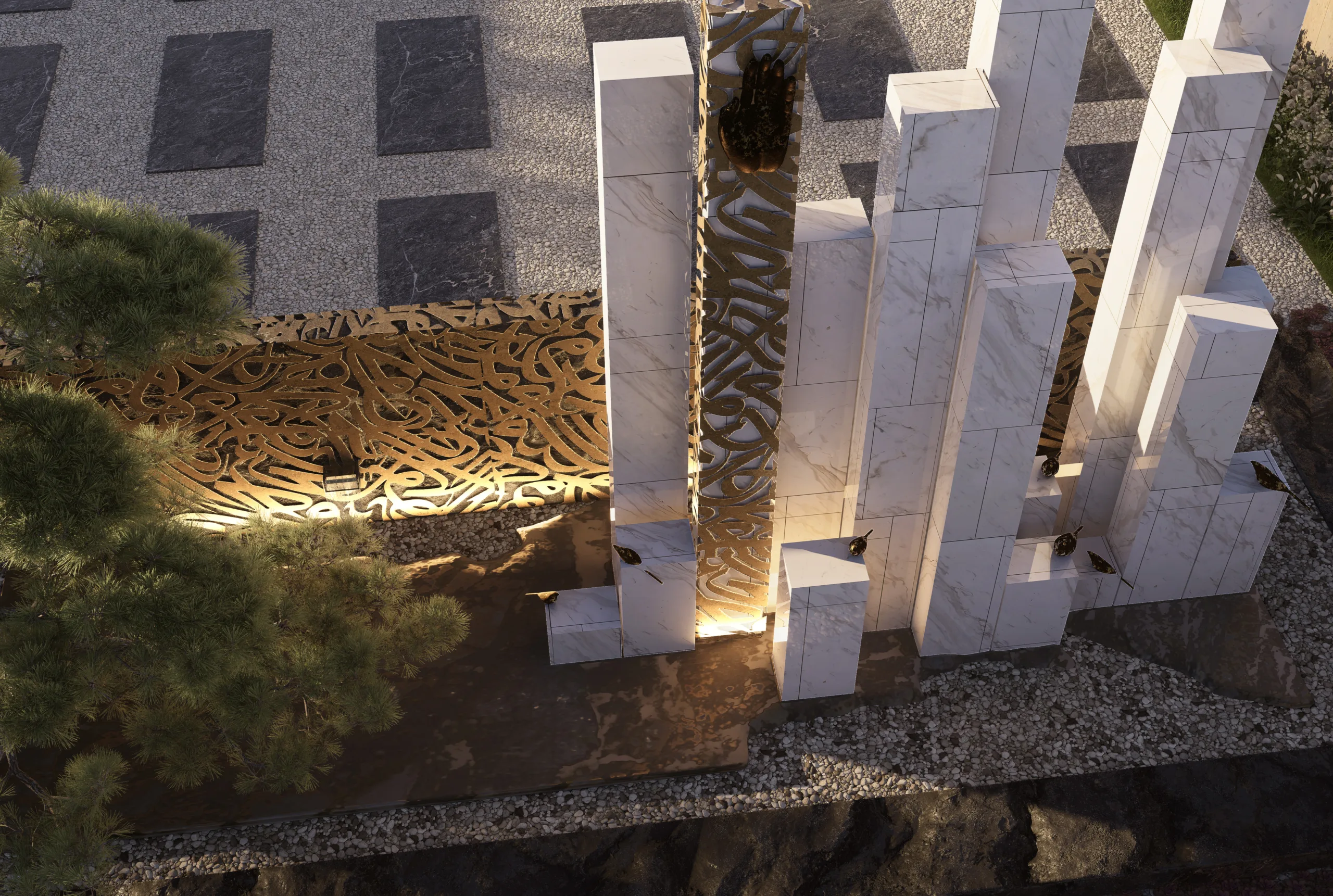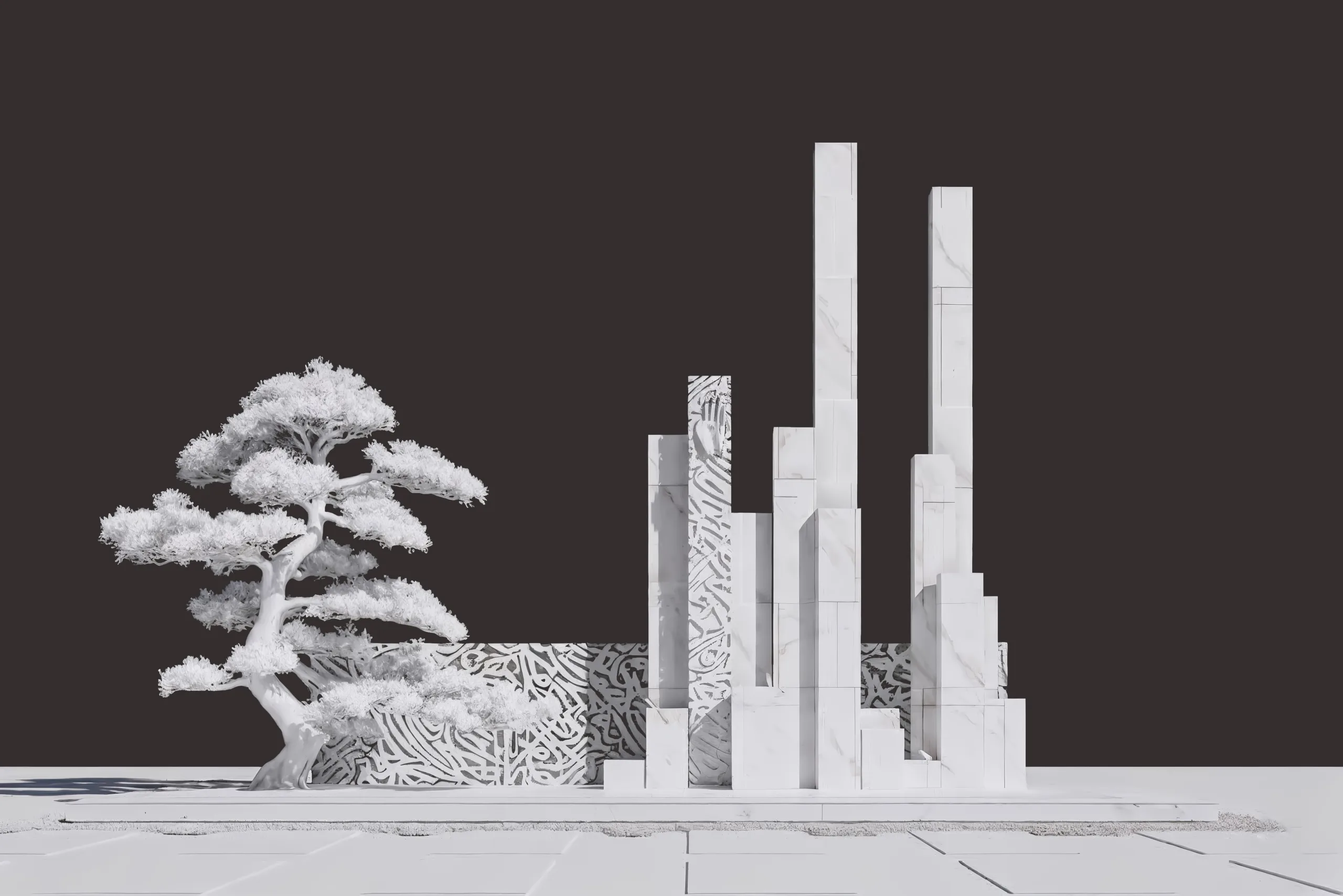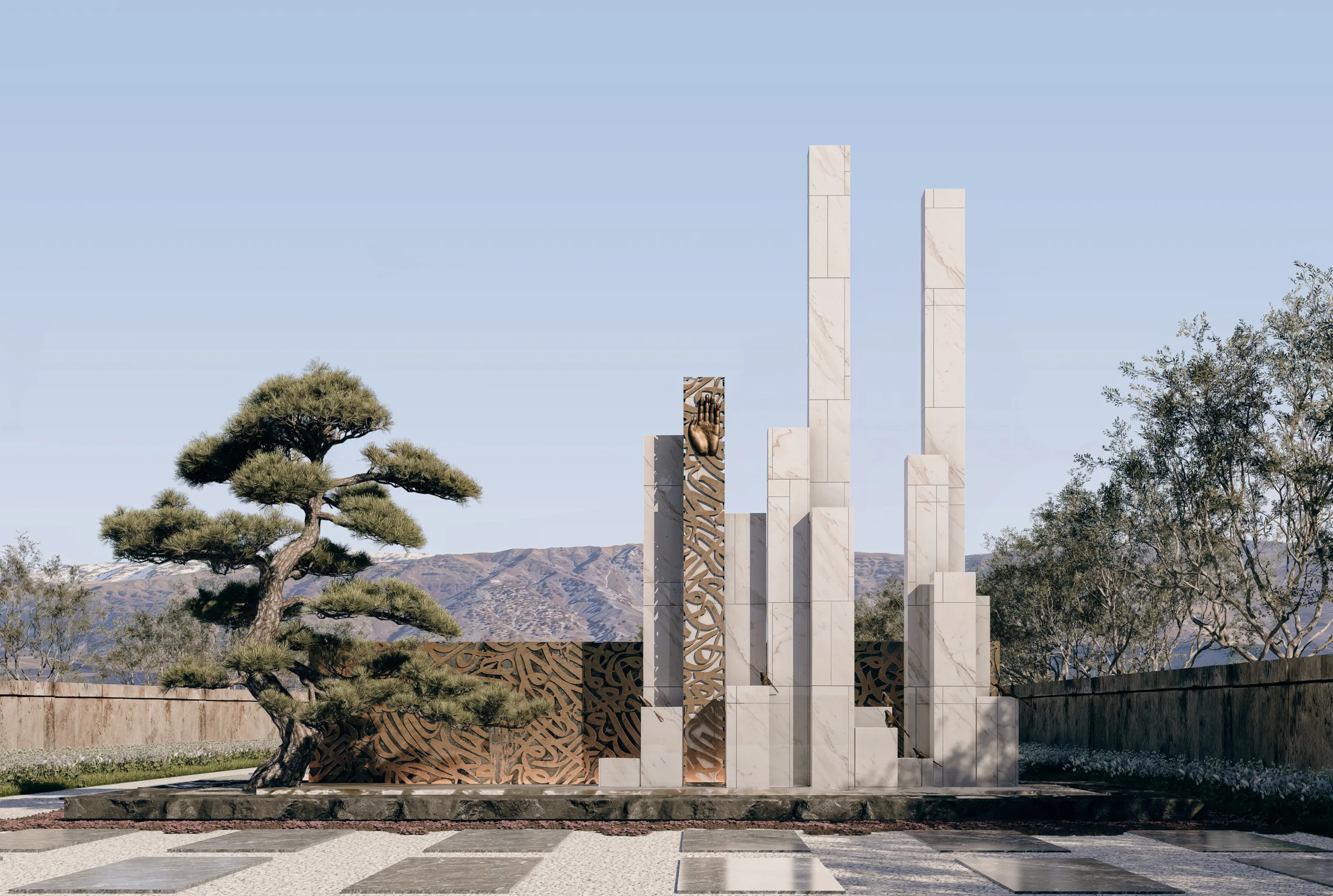
In the mountain village of Zaboud, the Memorial of the Seventeen Martyrs stands within the cemetery as a space of reflection and faith. Seventeen white marble columns rise from the rocky ground, their heights echoing the ages of a family lost in one moment. Small bronze birds rest atop the shorter columns for the children, while taller ones honor the mothers and sons. At the center, a metal column engraved with Arabic calligraphy bears a bronze hand reaching upward. Behind it, water flows toward a cedar tree, symbolizing renewal. Stone, water, and sky converge in harmony — transforming grief into remembrance and endurance into peace.
In the village of Zaboud, where rocks merge with the roots of the earth and the landscape carries the weight of endurance, stands the Memorial of the Seventeen Martyrs at the heart of the local cemetery — a quiet testament to memory and mercy. The memorial is composed of seventeen white marble columns, each varying in height to reflect the age of every family member who was martyred. The smaller columns represent the children, crowned with bronze birds that evoke the image of souls rising lightly beyond the heaviness of the ground. The taller columns embody the mothers and brothers, their solid presence resonating with the strength of the surrounding mountains. At the center rises a metal column engraved with Arabic calligraphy, bearing a bronze hand that symbolizes the eldest son, the family’s protector and anchor. The hand reaches upward — a gesture of acceptance and continuity, a bridge between earth and heaven, between human effort and divine will. Behind the columns, a decorative bronze wall allows a stream of water to flow gently toward the roots of a cedar tree that grows beside the monument. The water’s movement speaks of persistence and renewal, as if the souls of the departed continue to nourish life through the rhythm of nature.
The ground is paved with natural stone, echoing the rugged terrain of Zaboud, where beauty emerges from endurance and resilience becomes a quiet form of faith. Through its spiritual lens, the memorial invites reflection on the passage from mortality to eternity, and on memory as an act of compassion. The marble ascends like measured steps of light, the water sustains the cedar, and the wind moves through the Arabic script, turning form into prayer. Here, in the cemetery of Zaboud, stone, water, and sky coexist in still harmony — a space where architecture becomes remembrance, and remembrance becomes peace.

